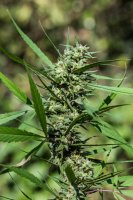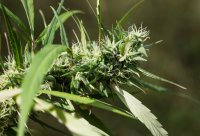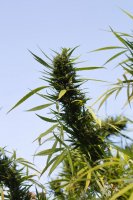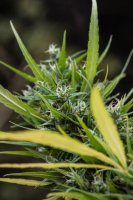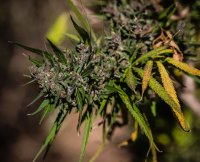"Heirloom And Landrace Cannabis Strains"
by Rick Pfrommer, Director of Education, Harborside Health Center
Original landrace and other heirloom strains are often lost in today’s hyperkinetic world of breeding. ‘Landrace’ refers to strains that are indigenous to an area, such as Red Congolese. ‘Heirlooms’ are strains that were collected worldwide during the 1970s and propagated in Hawaii and Northern California. Our constant desire for new strains leads breeders to continually cross and re-cross existing strains looking for the next big thing. There is, however, a small but growing contingent of cultivators who’re returning to our cannabis roots and propagating old landrace and heirloom strains. Varieties range from pure African sativas to Afghani indicas, collected by world travelers on the infamous Hippie Trail (also referred to as the “Hashish Trail”).
All during the 1970s and early 1980s, cannabis aficionados of all stripes traveled the world smoking the finest cannabis and hashish available. From Nepalese temple balls to the famed Mazar-i-Sharif Afghani Black, the Hashish Trail was filled with exotic delights. The trail rolls on through Lebanese Red to Moroccan Kif, with stops in Bangkok for Chocolate Thai, and Columbia and Mexico for their infamous golden strains. Many of these intrepid souls also collected seeds during their travels. It was these landrace strains that became the basis for the nascent cultivation culture that eventually sprang forth in both Hawaii and Northern California.
Talk with any cannabis connoisseur old enough to remember these legendary strains and you’ll come away with tales of their epic strength. Equatorial sativas from Africa to Vietnam flourished in Hawaii’s tropical dreamscape of cannabis cultivation. Indicas from Afghanistan were more at home in Northern California’s cooler climate. I was fortunate enough to live on the Big Island of Hawaii from 1993 to 1997, and I can attest that the best cannabis I have EVER smoked was grown in volcanic soil on the slopes of the largest active volcano in the world, Mauna Loa. By the time I got there almost everything grown in Hawaii was some combination of genetics, no longer a landrace. Yet a few of the old-timers still had access to the classic ’70s strains, making for a wonderfully unique and diverse smoking experience.
From Nepalese temple balls to the famed Mazar-i-Sharif Afghani Black, the Hashish Trail was filled with exotic delights.
The scene in California at this time was slightly different. Northern California, as beautiful as it is, ain’t Hawaii. The Emerald Triangle rests approximately on the same parallel as Afghanistan and the Hindu Kush mountains. While Southern Californians could grow Columbian and Mexican sativas, their northern counterparts found the stocky indica plants much better adapted for their climate. Shorter flowering time allowed harvest to occur before the fall rains came with their mold-inducing downpours. These short and chunky plants produced the infamous skunkweed that became Northern California’s calling card. Again, anyone old enough to remember this cannabis will never forget the pungent, almost rancid, skunk-like aroma. I remember going to parties in the early ’80s with this herb double-bagged-and still being outed minutes after walking in. “Yo man, I know you’re holding, share the love!” Our own Steve DeAngelo also has memories of this era, saying that to this day he’s not seen cannabis like what he saw from Northen California in the late ’70s and early ’80s.
So what does all this nostalgia mean for modern patients and cannabis aficionados? Well, several breeders have also recognized the value in these old-school strains. Ace Seeds, CannaBioGenn, Reeferman Seeds and Tom Hill, as well as the one-and-only Neville, are all selling a wide variety of landrace and heirloom seeds. Look for some of these to be available at Harborside in the near future. Growers who’re looking for ways to stay ahead of the curve in an increasingly competitive environment are turning to these varieties. For patients, many of these strains offer powerful relief in a different fashion than some of the more modern varietals. It’s not that they’re necessarily better, just different, and perhaps more effective for some patients’ specific conditions or needs. In any case, they’re strains definitely worth checking out.



